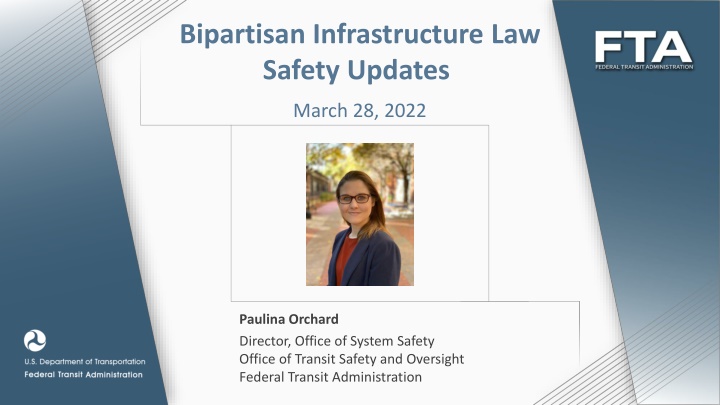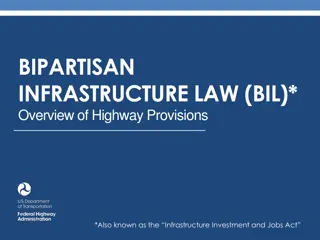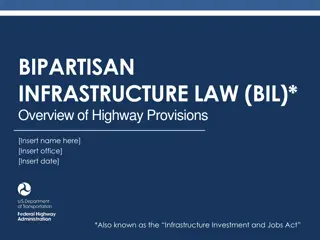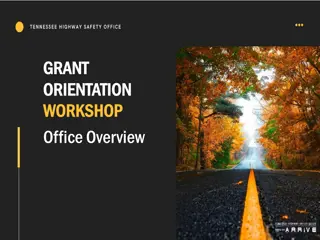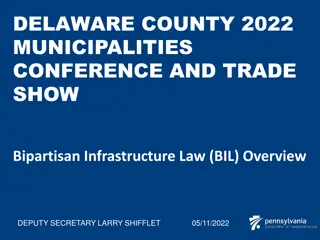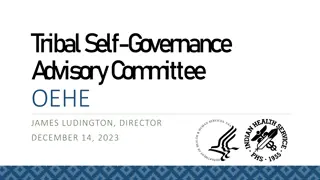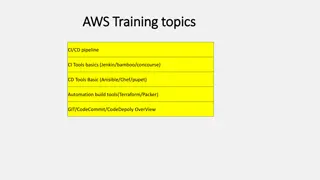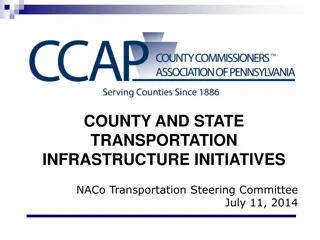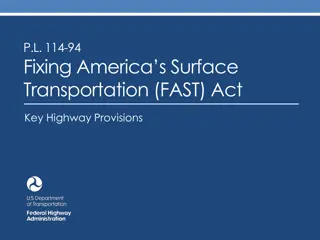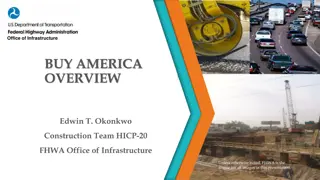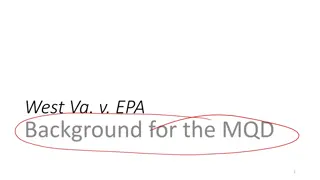Bipartisan Infrastructure Law Safety Program Updates
This content discusses the updates to the Federal Transit Administration's safety program in line with the Bipartisan Infrastructure Law. It covers aspects such as the National Public Transportation Safety Plan, Public Transportation Agency Safety Plans, and impacts on the transit industry. The law requires safety performance measures, updated standards, and precautionary actions to ensure public safety and health during emergencies. The Dear Colleague Letter outlines FTA's expectations for transit agencies to comply with the new requirements.
Download Presentation

Please find below an Image/Link to download the presentation.
The content on the website is provided AS IS for your information and personal use only. It may not be sold, licensed, or shared on other websites without obtaining consent from the author.If you encounter any issues during the download, it is possible that the publisher has removed the file from their server.
You are allowed to download the files provided on this website for personal or commercial use, subject to the condition that they are used lawfully. All files are the property of their respective owners.
The content on the website is provided AS IS for your information and personal use only. It may not be sold, licensed, or shared on other websites without obtaining consent from the author.
E N D
Presentation Transcript
Bipartisan Infrastructure Law Safety Updates March 28, 2022 Paulina Orchard Director, Office of System Safety Office of Transit Safety and Oversight Federal Transit Administration
Agenda Updates to FTA s Safety Program National Public Transportation Safety Plan Public Transportation Agency Safety Plans State Safety Oversight Program National Transit Database 2
Updates to FTAs Safety Program The Bipartisan Infrastructure Law amends requirements for FTA s existing Public Transportation Safety Program, including: National Public Transportation Safety Plan Public Transportation Agency Safety Plans (PTASP) State Safety Oversight (SSO) Program 3 3
Impact on Transit Requirements for Requirements for Bipartisan Infrastructure Law FTA Transit Industry 4
NATIONAL PUBLIC TRANSPORTATION SAFETY PLAN 5 5
National Public Transportation Safety Plan The Bipartisan Infrastructure Law requires FTA to update its National Safety Plan to: Establish safety performance measures for all modes of public transportation related to new risk reduction program requirements for certain transit agencies Update safety standards Include precautionary and reactive actions required to ensure public and personnel safety and health during an emergency Consider, where appropriate, use of performance-based and risk-based methodologies Requirements for FTA Impacts the Transit Industry 6
PUBLIC TRANSPORTATION AGENCY SAFETY PLANS 7 7
Dear Colleague Letter FTA issued a Dear Colleague Letter on February 17, 2022 The letter outlines FTA's expectations for transit agencies to address Bipartisan Infrastructure Law requirements related to the Public Transportation Agency Safety Plan (PTASP) requirements Visit www.transit.dot.gov/BIL for a copy of this letter Addressed to Transit Industry 8
Engaging Frontline Workers The Bipartisan Infrastructure Law requires agencies serving an urbanized area with a population of fewer than 200,000 (small UZA) must develop their Agency Safety Plan in cooperation with frontline employee representatives Section 5307 recipients serving a UZA with a population of 200,000 or more (large UZA) to create safety committees comprised of equal numbers of management representatives and frontline employee representatives Requirements for Transit Industry 9
Safety Committees The Bipartisan Infrastructure Law requires transit agencies that receive Section 5307 funding and serve a large UZA to create safety committees This committee is responsible for: Identifying and recommending risk-based mitigations or strategies necessary to reduce the likelihood and severity of consequences identified through the agency s safety risk assessment Identifying mitigations or strategies that may be ineffective, inappropriate, or were not implemented as intended Identifying safety deficiencies for purposes of continuous improvement Approving an Agency Safety Plan that complies with Bipartisan Infrastructure Law requirements and any updates to the Agency Safety Plan Establishing performance targets for the agency s risk reduction program (not required until FTA has updated the National Public Transportation Safety Plan) Requirements for Transit Industry 10
Additional Safety Enhancements The Bipartisan Infrastructure Law requires transit agencies to address strategies to minimize exposure to infectious diseases It also requires transit agencies that serve large UZAs and receive 5307 funds to: Establish risk reduction programs and targets Set aside 0.75% of section 5307 funds for safety related projects Increase safety training, including a requirement to include maintenance personnel in the agency s comprehensive safety staff training program and to provide de-escalation training Requirements for Transit Industry 11
UZA Size/Reporter Type Breakdown 708 PTASP Applicable Agencies Large UZA Small UZA (428 providers, 60%) (280 providers, 40%) Agency Count Full Reduced (112, 16%) Full Reduced (165, 23%) (315, 45%) (115, 16%) Large UZA (95% of VRM) Small UZA (5% of VRM) Service Provided: Vehicle Revenue Miles (VRM) Full Reporters (97% of VRM) Full (93% of VRM) Reduced (2% of VRM) Data Sources Applicable Agency Counts: PTASP-TAC Reporter Types and VRM: NTD Report Year 2020 Full Reduced (2% of VRM) (3% of VRM) 12
SSO Requirements for FTA The Bipartisan Infrastructure Law requires FTA to issue a special directive to each SSOA on the development and implementation of risk-based inspection programs FTA must assess the capability of each SSOA to conduct inspections and must enforce the new Bipartisan Infrastructure Law provisions FTA must develop and disseminate to SSOAs the process and methodology used to monitor the effectiveness of SSOA enforcement authorities and practices Requirements for FTA Impacts SSOAs and RTAs 14
SSOA Risk-based Inspection Program SSOAs must have inspection authority, and must develop policies and procedures to: Access and enter RTA facilities to inspect infrastructure, equipment, records, personnel, and data Collect data from RTAs, including data the RTA collects when identifying and evaluating safety risks SSOAs must incorporate these policies and procedures on access and data collection into the Program Standard and must ensure they are included in the RTA's ASP Requirements for SSOAs 15
Assault and Collision Reporting Requirements The Bipartisan Infrastructure Law requires transit agencies to report data relating to: Assaults on a transit worker Vehicular and pedestrian accidents involving buses and fatalities resulting from an impact with a bus This applies to more recipients than just full reporters to the NTD Requirements for Transit Industry 17
Updates and Questions www.transit.dot.gov/BIL Visit FTA s Bipartisan Infrastructure Law webpage, available at www.transit.dot.gov/BIL, for the latest information. If you have questions regarding these new requirements, please contact us at FTA-IIJA@dot.gov. FTA-IIJA@dot.gov 18
